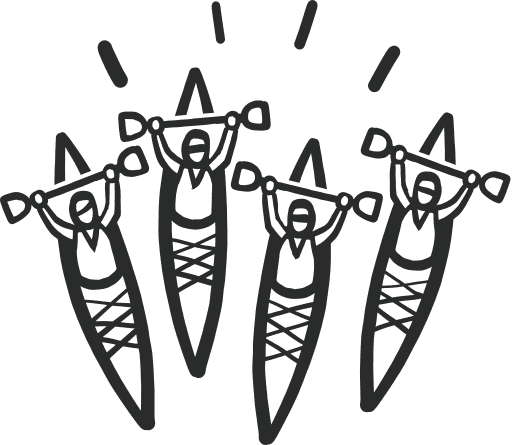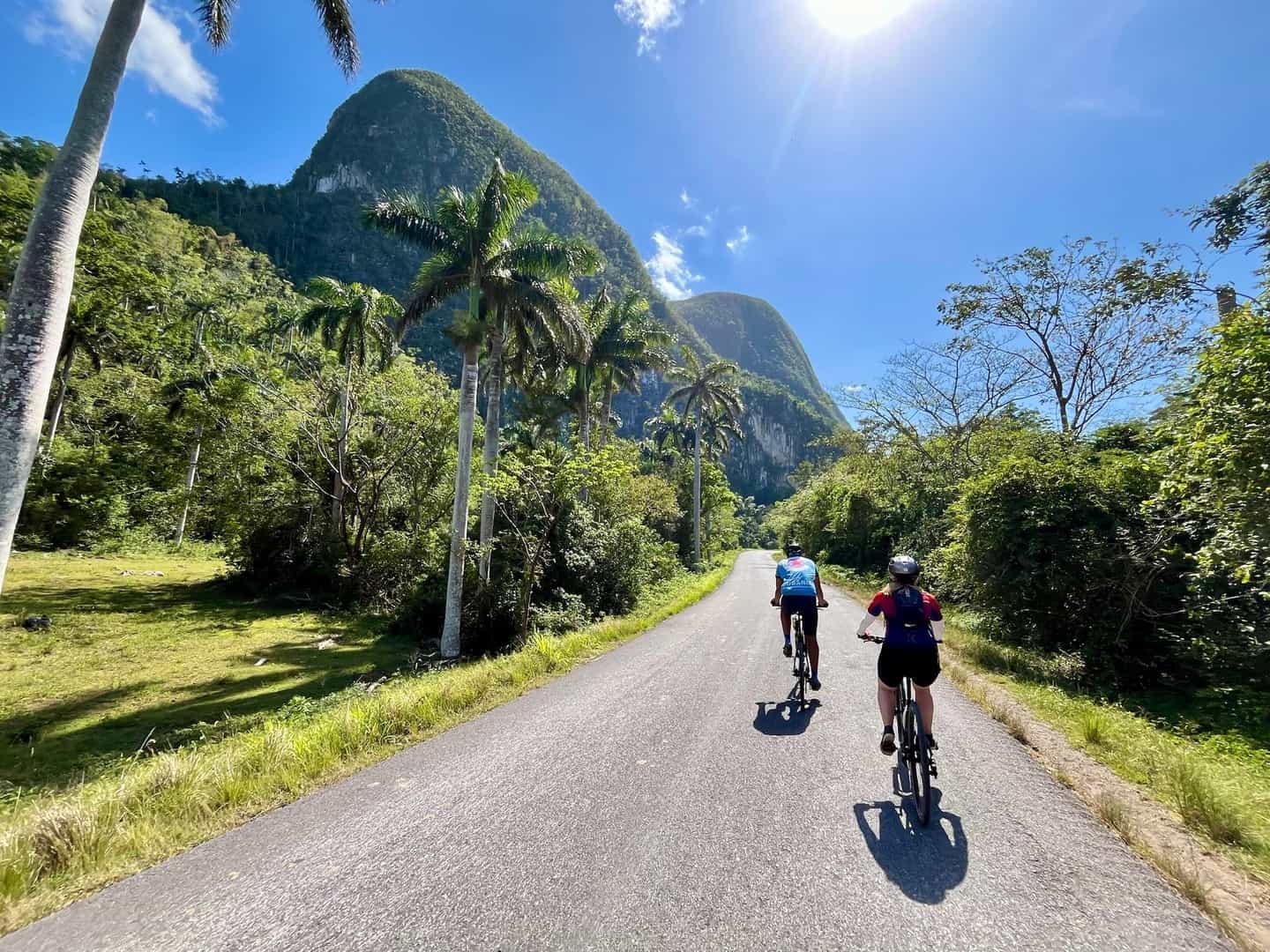
Cycle the Backroads of Cuba
A revolutionary ride through western Cuba's beautiful interior and Caribbean coastline
What's Included?
Activities & Certified Guides
All itinerary activities with expert, local, English-speaking cycle guidesCasa particular & stilted hut
6 nights in welcoming casas particulares and 1 night in a stilted hutMeals
All breakfasts, lunches and dinnersTransfers & Support Vehicle
All airport and local transfers; plus a support vehicle to hop in to if your legs need a restEquipment
Trek 8.3 DS 2015 front suspension bikeSmall Like-minded Groups
Solo-friendly by design, join our small n’ sociable groups of up to 14 like-minded, active and outdoorsy people…
…
What's it like?





















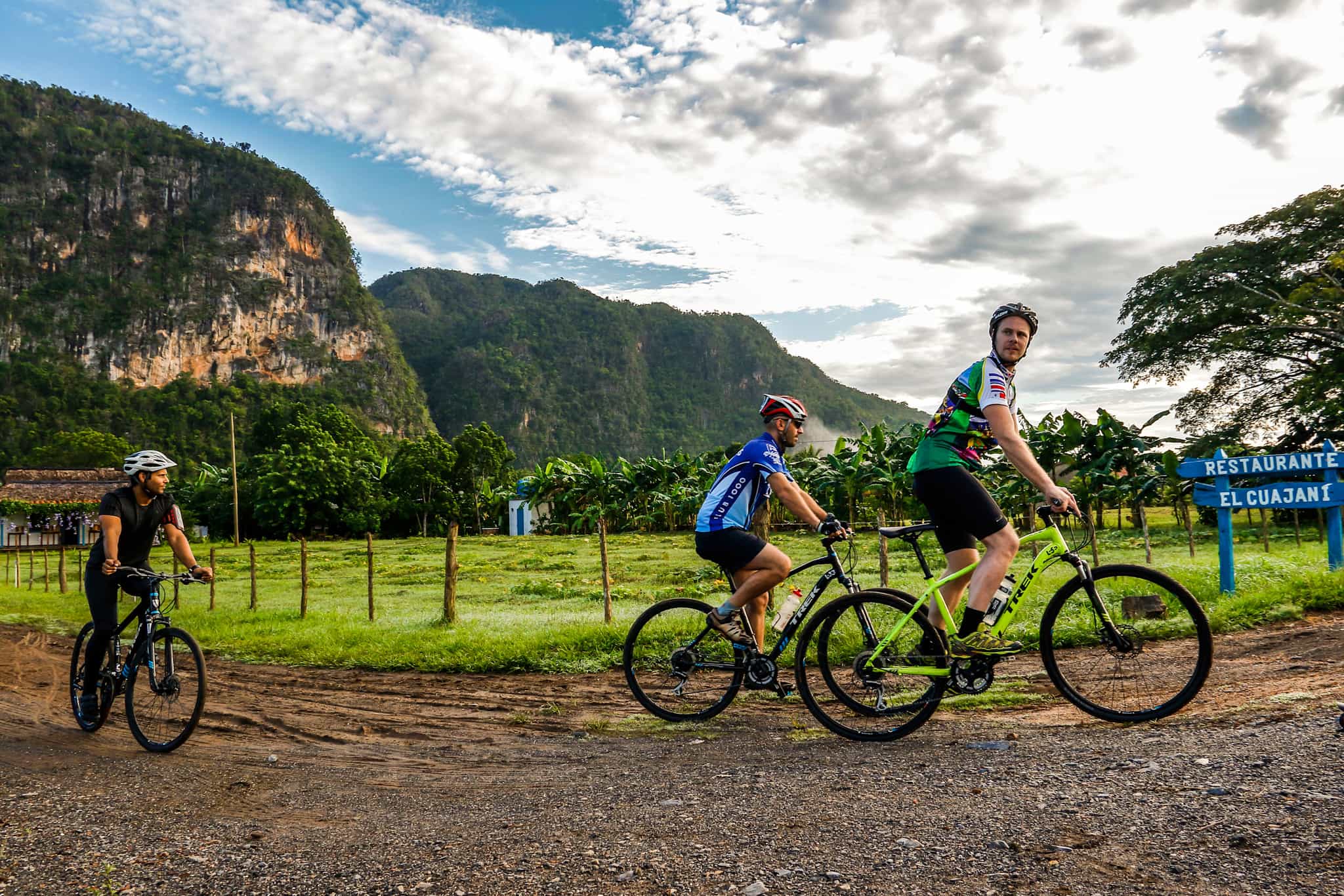
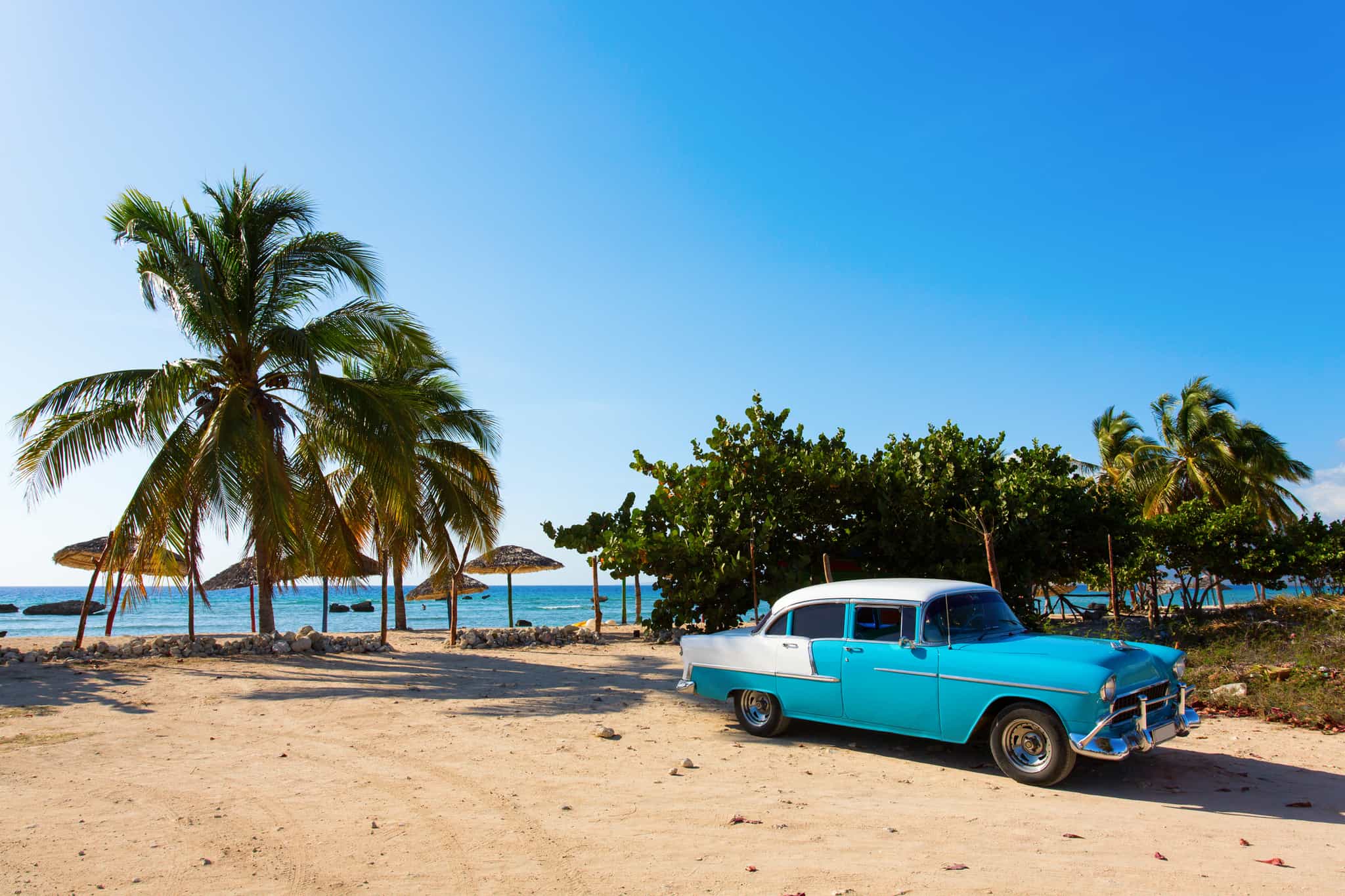

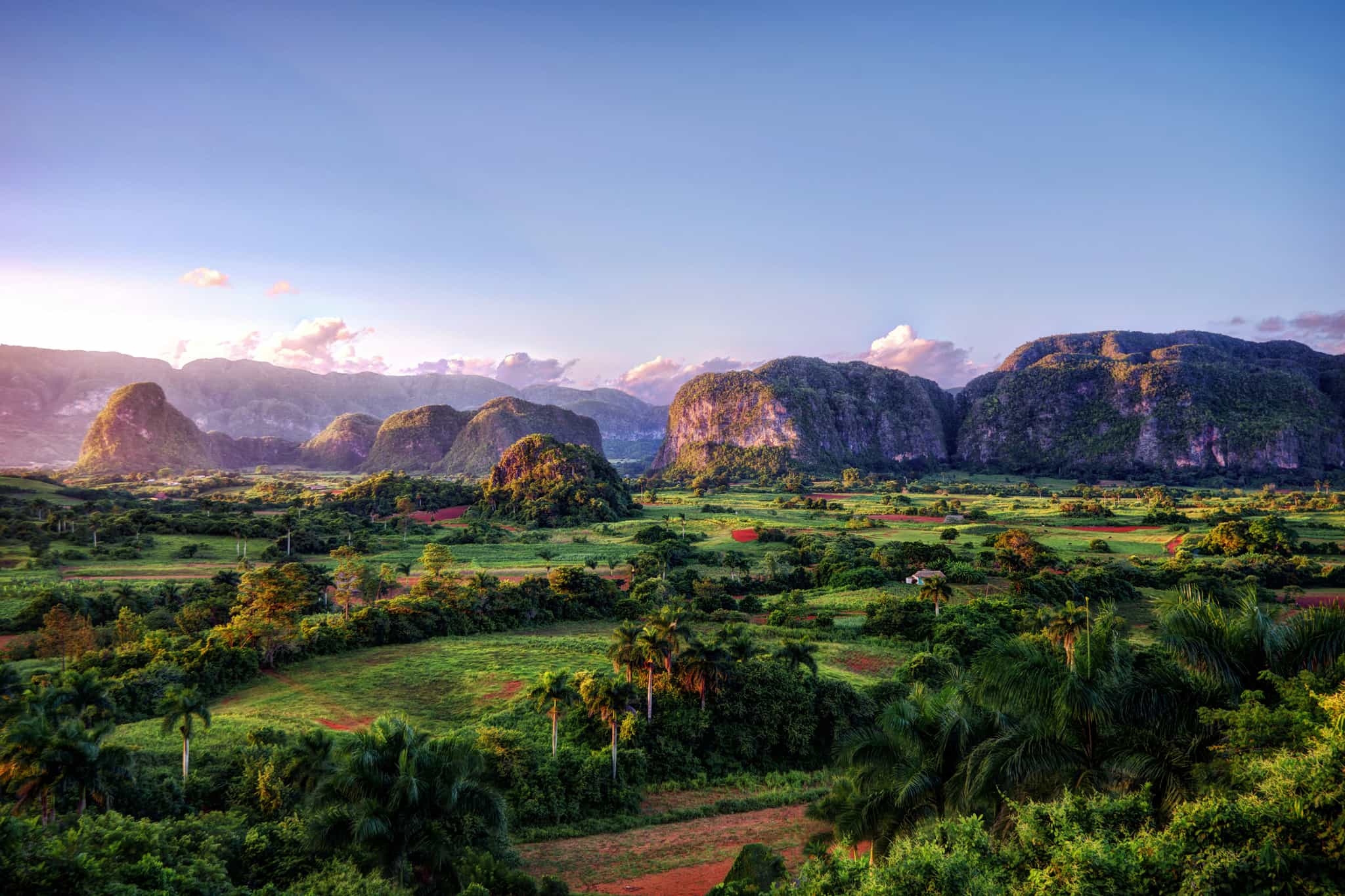
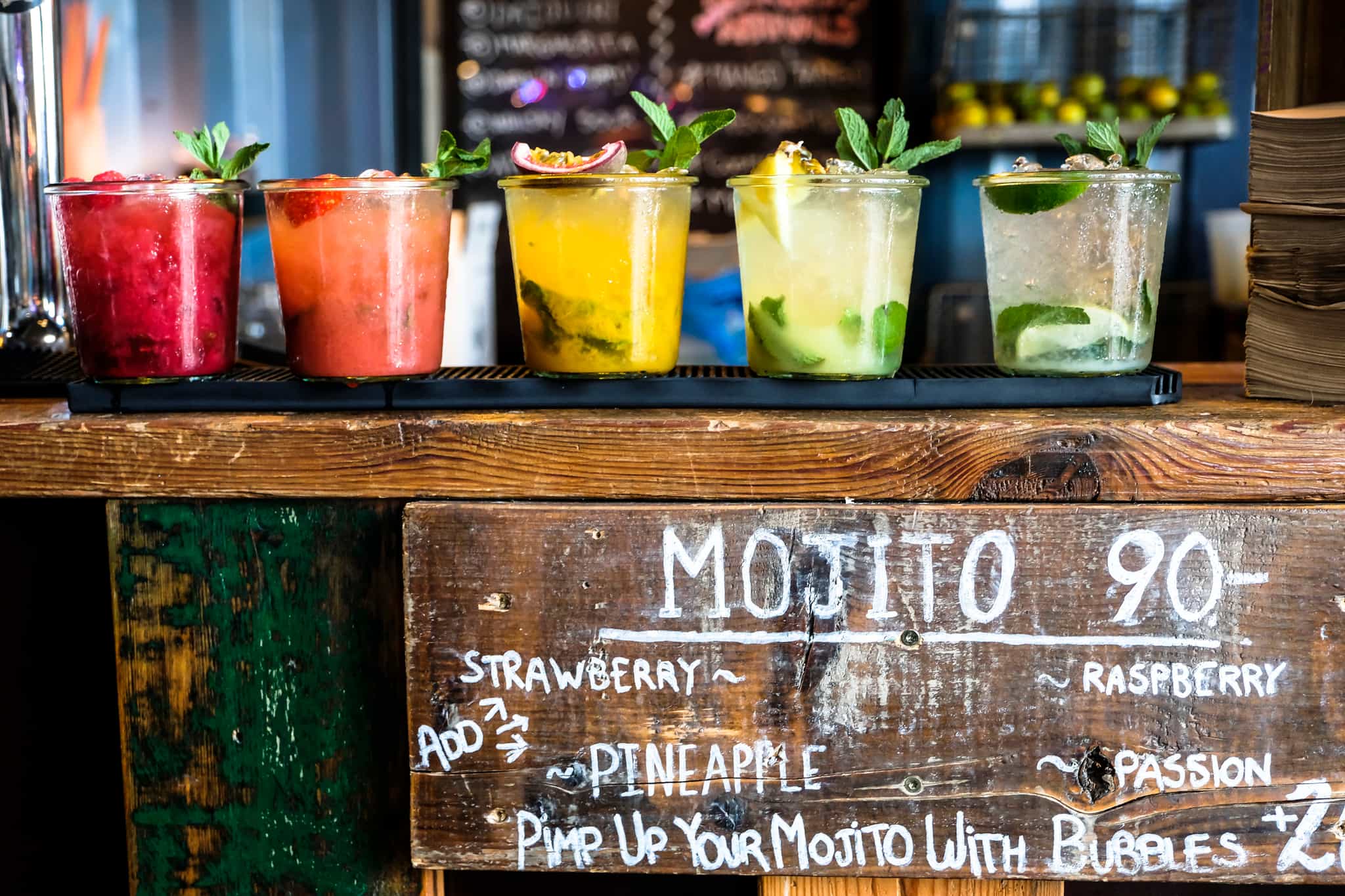
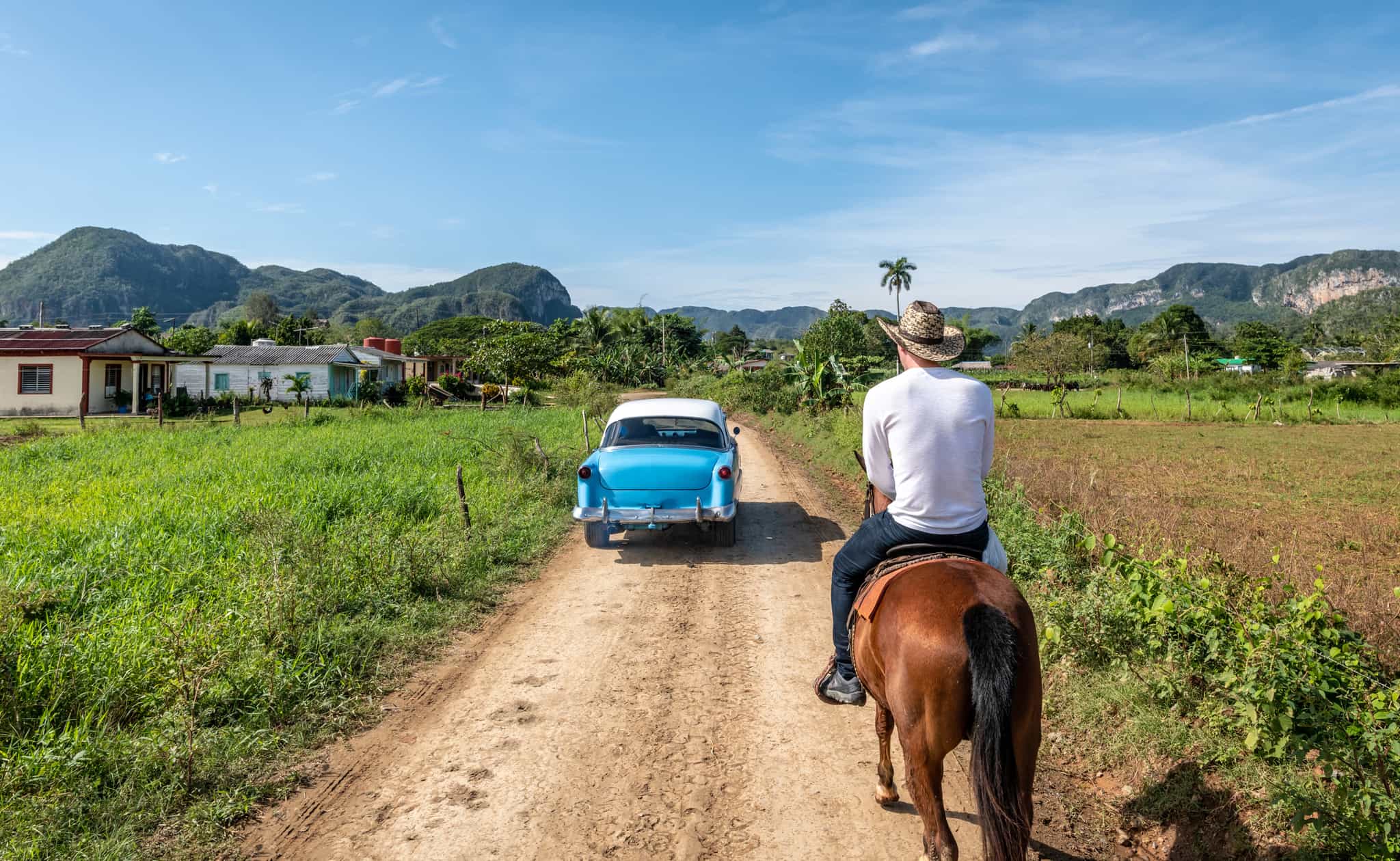
Roll through the verdant Jurassic landscapes of Viñales and along sparkling stretches of Caribbean coastal roads
Pedal into the Sierra del Rosario Biosphere Reserve and cool off with a wild swim in the San Juan River
Sip mojitos in Havana, dance with the locals in old fishing villages, kick back on white sand beaches and cycle up to Che Guevara's hideouts
Key Information
Day 1
Welcome to Cuba!
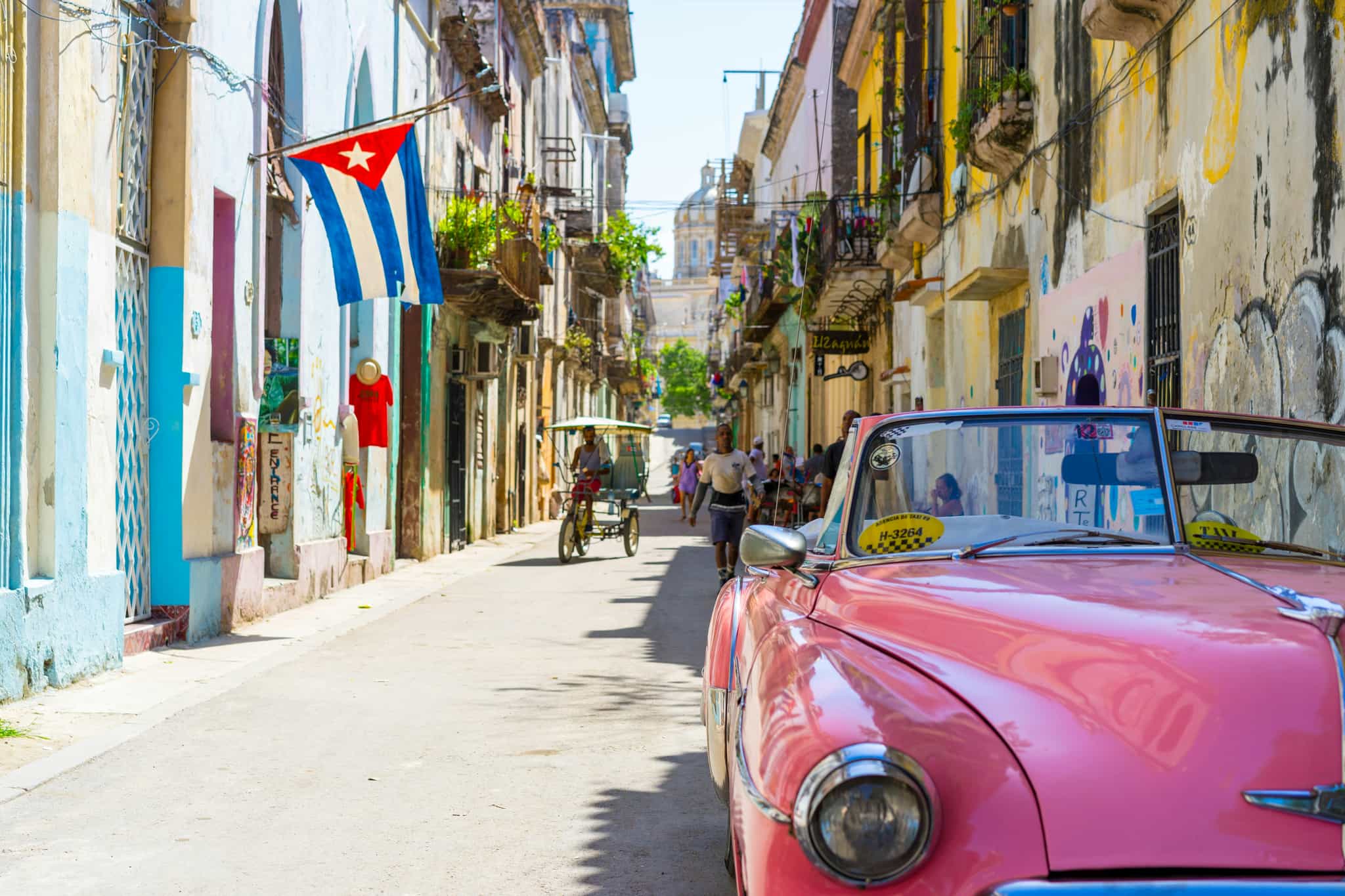
Your adventure begins as you touch down in Havana, the vibrant capital adored by Hemingway. Meet your host at the airport and transfer to the heart of the Old Town, aka La Habana Vieja. Settle into your casa particular then perhaps take a stroll around the colourful streets. In the evening, you'll meet your guide and the rest of the group to head out to a nearby paladar for your first Cuban feast of the trip.
Day 2
Cycle to Las Terrazas
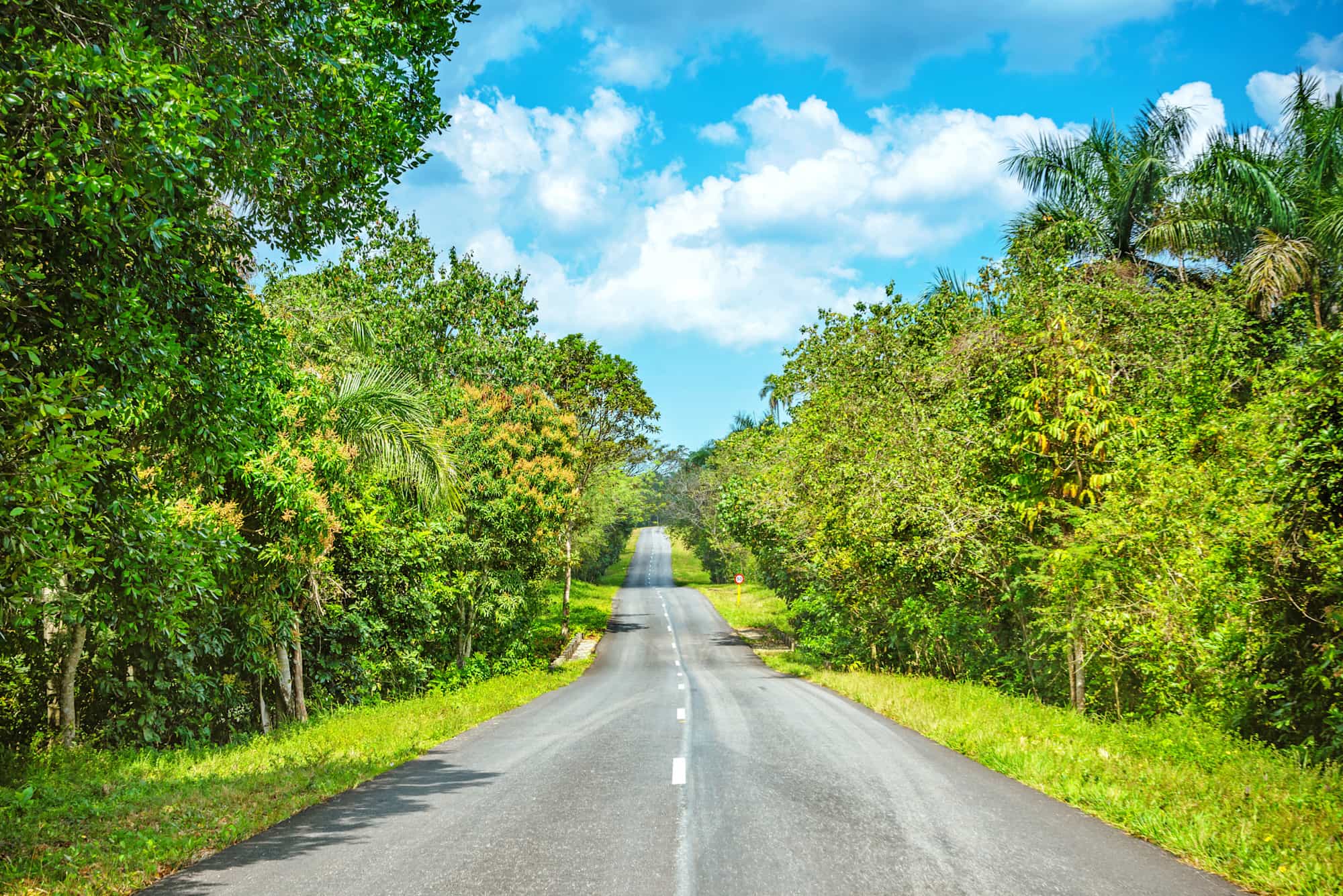
Cycling
Head to the outskirts of Havana to start your first ride on Cuba’s diverse roads. Pedal towards the Sierra de Rosario, a UNESCO Biosphere Reserve and home to the Las Terrazas community. Once a struggling farming region, this area is now a self-sufficient community, where reforestation efforts have brought the landscape to life. After a local lunch at a community-run restaurant, gear up for an optional zip-line adventure – soar above the lush forest and enjoy panoramic views. Later, cruise downhill to the tranquil San Juan River, where you’ll check into your stilted hut. Cool off with a refreshing swim in the river before tucking into dinner at Cuba’s first vegetarian restaurant.
Day 3
Las Terrazas to San Diego
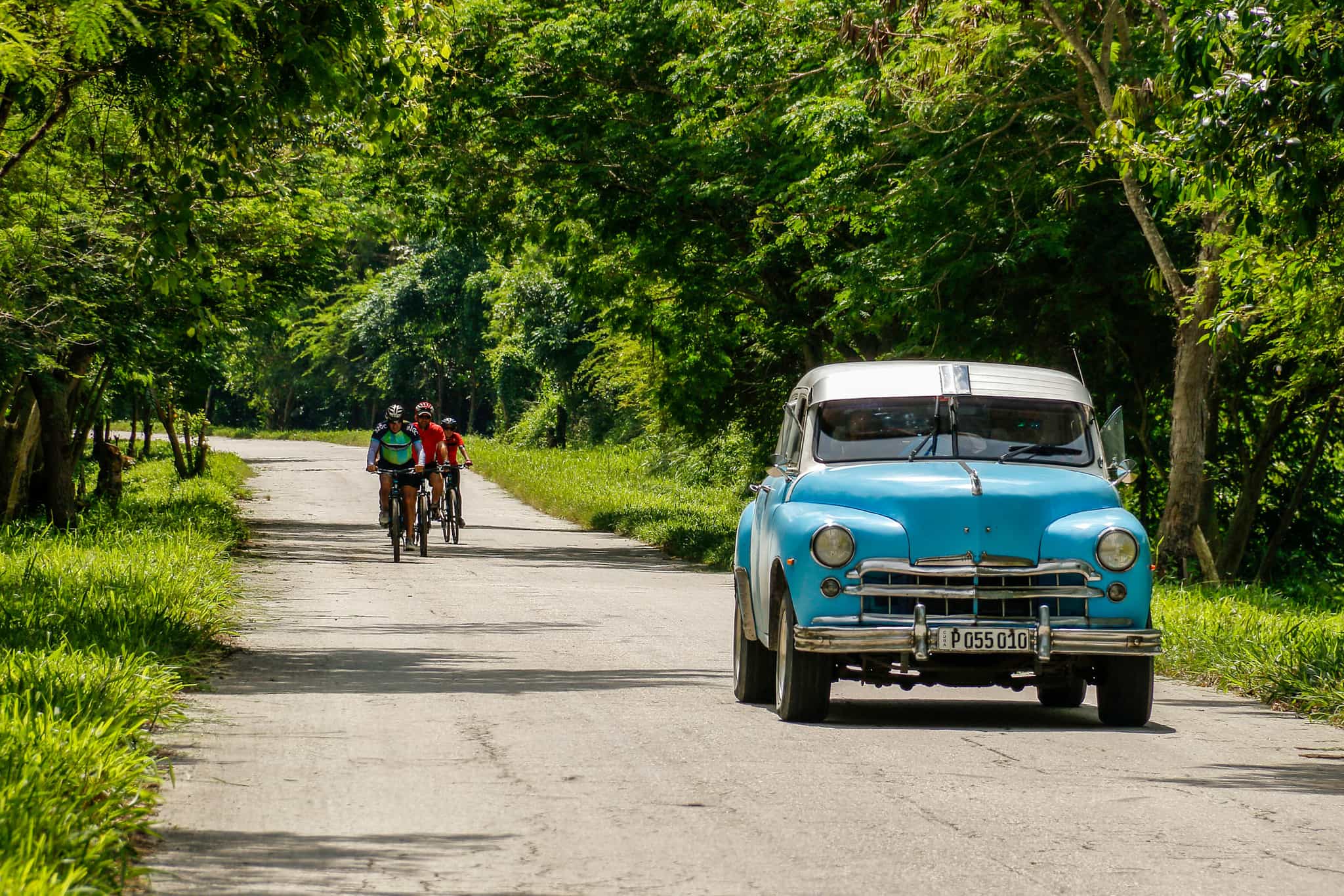
Cycling
Wake up to birdsong and cycle to Hotel Mok for breakfast overlooking the forest. Today’s route will vary depending on weather and group preferences, but either way it will be a scenic ride. Descend out of the Las Terrazas Biosphere Reserve to the valley below with views of the Sierra del Rosario mountain range to your right and the expansive plains of Cuba’s coastal lowlands to your left. Pedal through the rural villages and agricultural landscapes of Artemisa and Pinar del Río provinces, with colourful street scenes and warm interactions with locals along the way. This mostly flat route leads you to San Diego de los Baños, a quiet and picturesque former spa town. Spend the evening soaking up the peaceful vibe of this hidden gem, far from the typical tourist path.
Day 4
San Diego to Puerto Esperanza

Cycling
Today, prepare for a picturesque ride to Cuba's serene north coast. Leaving San Diego, cycle through the enchanting Parque La Güira before visiting Cueva de los Portales, a site of historical significance as Che Guevara’s hideout during the Cuban Missile Crisis. Continue your ride past lush landscapes and tobacco farms, arriving in Puerto Esperanza, a charming fishing village almost untouched by tourism. This area offers a rare glimpse into authentic Cuban life. After checking into your next casa particular, meet with the local community cultural project, La Camorra, for a fun evening of traditional Creole music.
Day 5
Puerto Esperanza to Viñales via Cayo Jutias
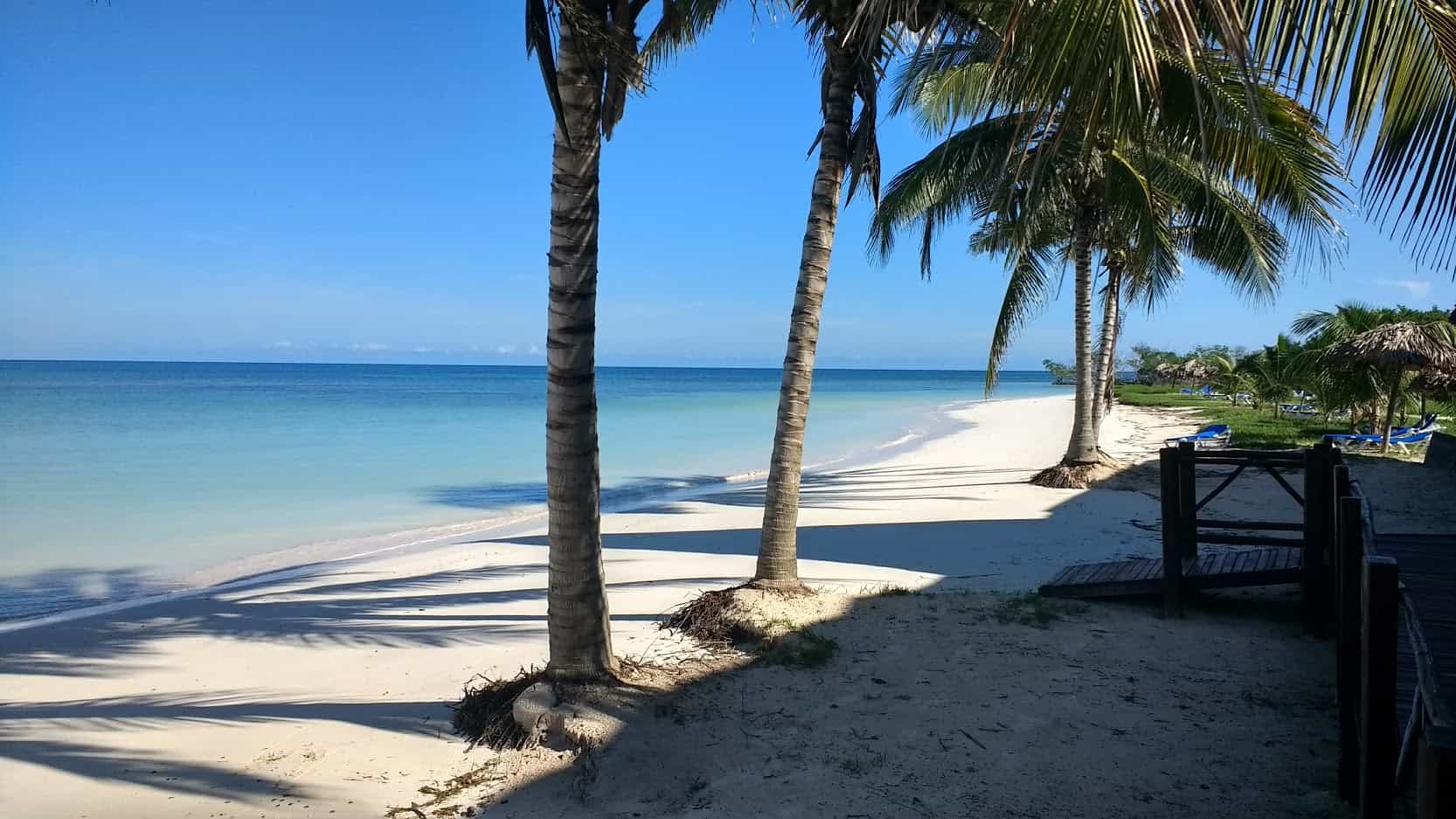
Cycling
After breakfast, say goodbye to Puerto Esperanza as you venture through quiet backroads (be prepared for some potholes and unpaved paths) on your way to Cayo Jutias. This stunning 11km coastal stretch, with its pristine white sand beach, has yet to be discovered by most travellers. Enjoy a leisurely lunch, taking time to relax, swim, or snorkel in the crystal-clear waters of the Caribbean. Afterward, your support vehicle will transport you to Viñales, where you’ll spend the evening.
Day 6
Viñales Valley
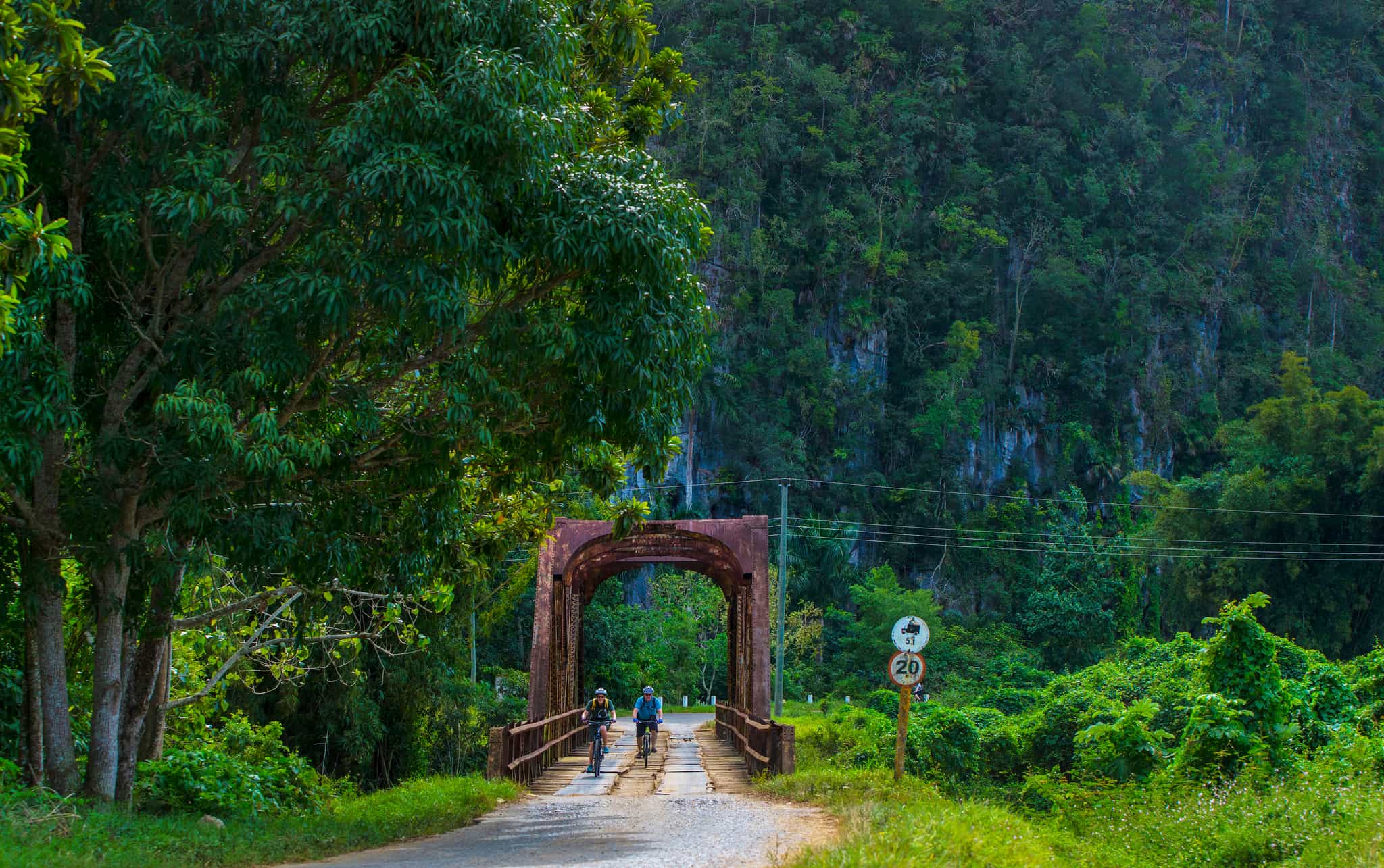
Cycling
Today, embark on a scenic cycling adventure through the breathtaking Viñales Valley, a UNESCO World Heritage Site known for its dramatic landscape of limestone 'mogotes' (steep, isolated hills) and traditional farming practices. Visit the famous Mural de la Prehistoria, a giant, colourful painting on the hillside. Cycle along farm tracks, stopping at tobacco farms to learn about Cuba’s world-renowned cigars. Explore fruit farms and other agricultural sites as you pedal through the lush terrain. Head to Cueva del Indio, where you’ll take a boat ride along its subterranean river. Later in the afternoon, enjoy free time to wander through the relaxed streets of Viñales.
Day 7
Viñales to Havana
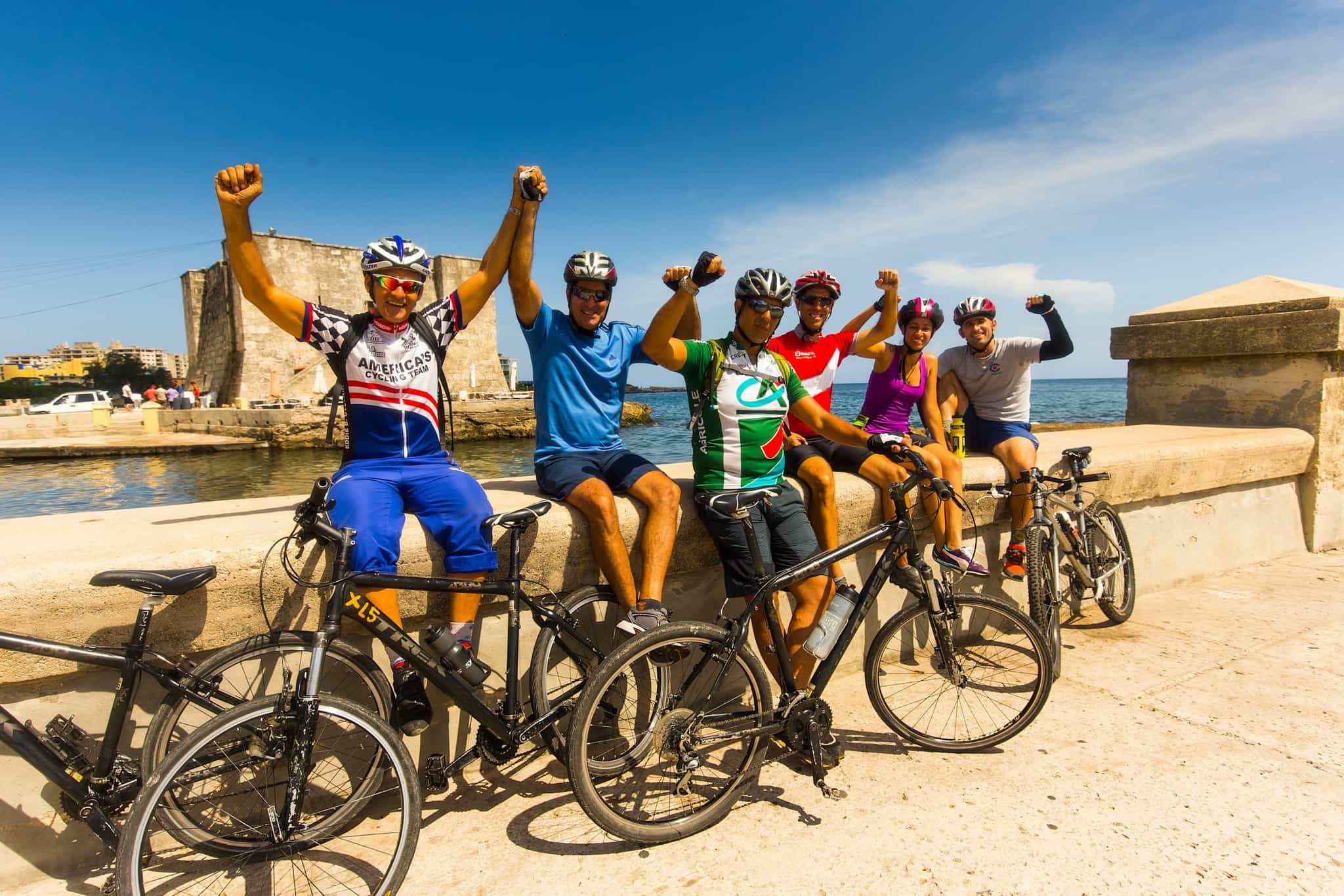
Cycling
Fuel up on brekkie at Yoan and Yareli's casa before you bid them farewell and head off for your final ride through the stunning Viñales Valley. Pedal north, surrounded by the towering Viñales mountains and dramatic ‘mogotes’ that line the road. Along the way, make a stop at the Los Portales cave, the historic site where Che Guevara was stationed during the 1962 Cuban Missile Crisis. After a picnic lunch you'll travel the three hours back to Havana by bus where you'll check back into the casa particular stayed in on your first night. The last night of any Cuban adventure means one thing: dinner and cocktails in a local paladar before heading out to find some music!
Day 8
Adiós, Cuba
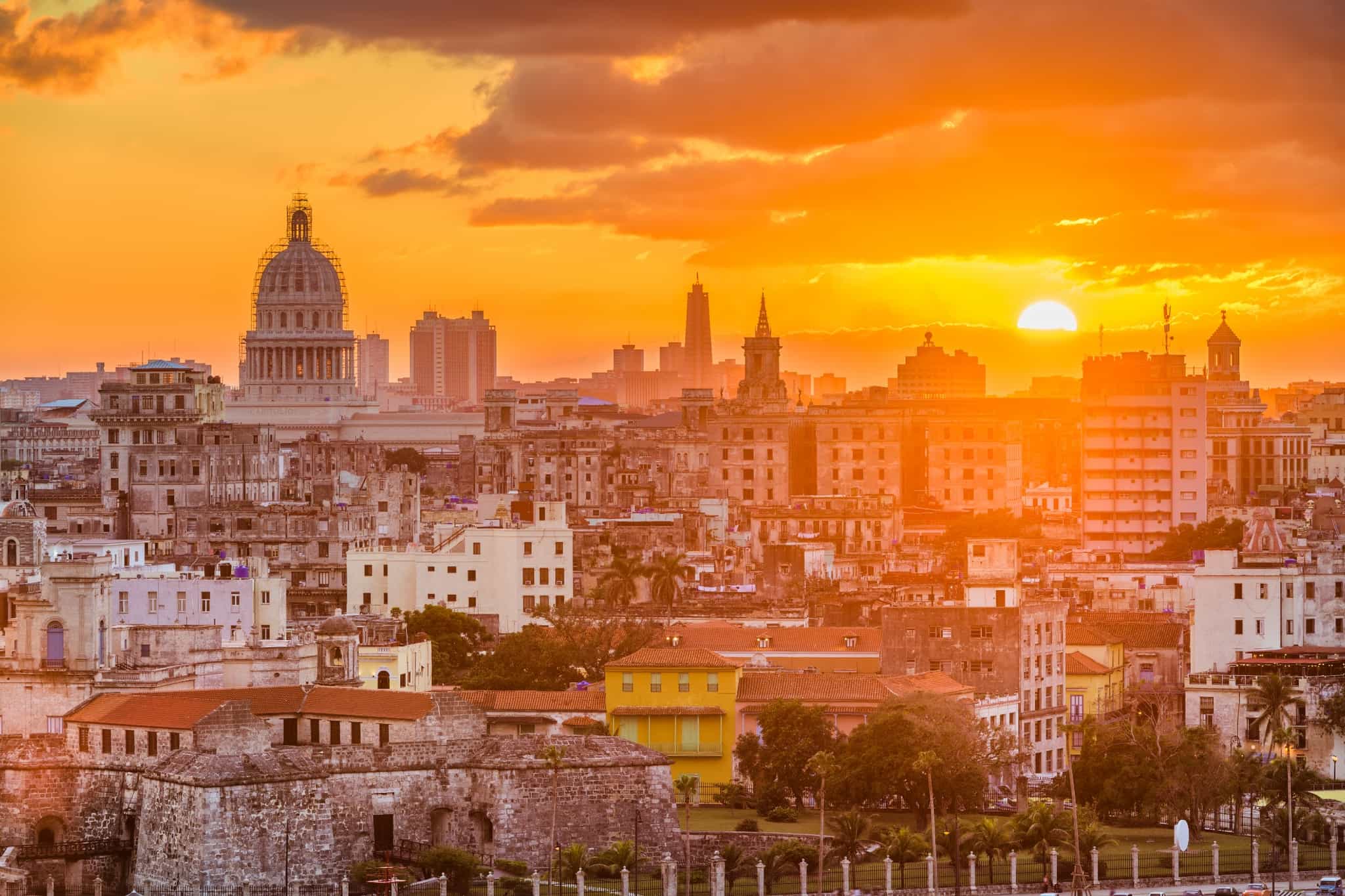
Depending on your flight time, enjoy a walk through Havana's captivating Old Town. With its vibrant colors, historical charm, and bustling streets, it’s the perfect way to say goodbye to Cuba. Transfer to Havana Airport for your onward journey.
The Area
Logistics
Starts
Jose Marti Airport, Havana
Any time on Day 1
Ends
Jose Marti Airport, Havana
Any time on Day 8
Transfers
Private transfers between the airport and your casa particular in Havana are included for any time you choose to arrive or depart. Your host will meet you on arrival at José Martí International Airport in Havana at Terminal 3 (where international flights from Europe and Canada arrive) and transfer you to your casa particular accommodation in the artsy area of Vedado. On Day 8, your host will transfer you back to the airport in time for your onward flight.
If you wish to arrive before the trip start date or stay on longer at the end, your host can arrange private airport transfers and casa particular accommodation in the Vedado district of Havana - see Optional Extras for prices. Your host can also arrange pre- and post-trip accommodation at a selection of other Havana hotels, or also at beachside locations such as Playa Jibacoa, an hour and a half east of Havana, and Cayo Levisa, an island three hours to the west.
Travel options
There are direct international flights to Havana from various major hubs in Europe.
Day 1
Breakfast
Lunch
Dinner
Day 2
Breakfast
Lunch
Dinner
Day 3 – Day 7
Breakfast
Lunch
Dinner
Day 8
Breakfast
Lunch
Dinner
What is the food like?
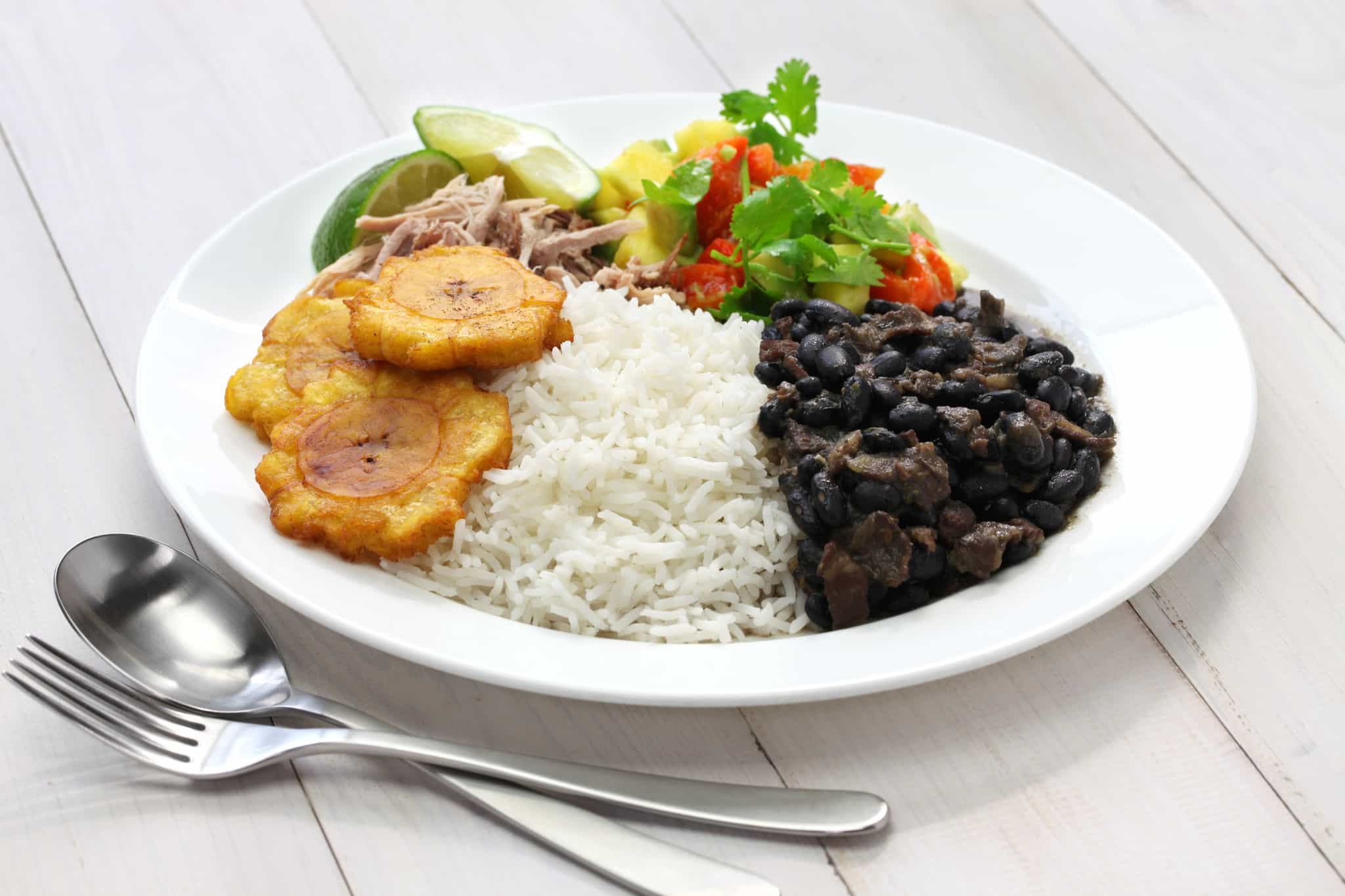
You'll be tucking into rice, black beans, slow-roasted pork and chicken, fresh fish, plenty of tropical fruit and maybe even lobster. It can be difficult to find a good sandwich in Cuba, so your guide will often arrange a sit-down lunch. It is a good idea to bring along some of your favourite snack bars for some protein and energy on the adventure, as this type of snack food is scarce in Cuba. Food shortages are a reality for local residents and small businesses, and whilst you certainly won't be going hungry, it is useful to know that Cuban cuisine is typically based on a small number of ingredients, prepared lovingly and to deliciously high standards. You'll find that rice forms the base of most meals with sides of root vegetables and beans. Of course, Cuba is the land of the Mojito, Daiquiri and Cuba Libre. You'll find plenty of rum-based drinks all over the country. Beware, they are free-poured and might be stronger than the ones you get at home!
Vegetarians, vegans and other dietary requirements and allergies can be catered for – please just request this on your passenger info form. Vegans in particular should be prepared for a limited menu, since there are very few vegetarians or vegans in Cuba.
What is the accommodation like?
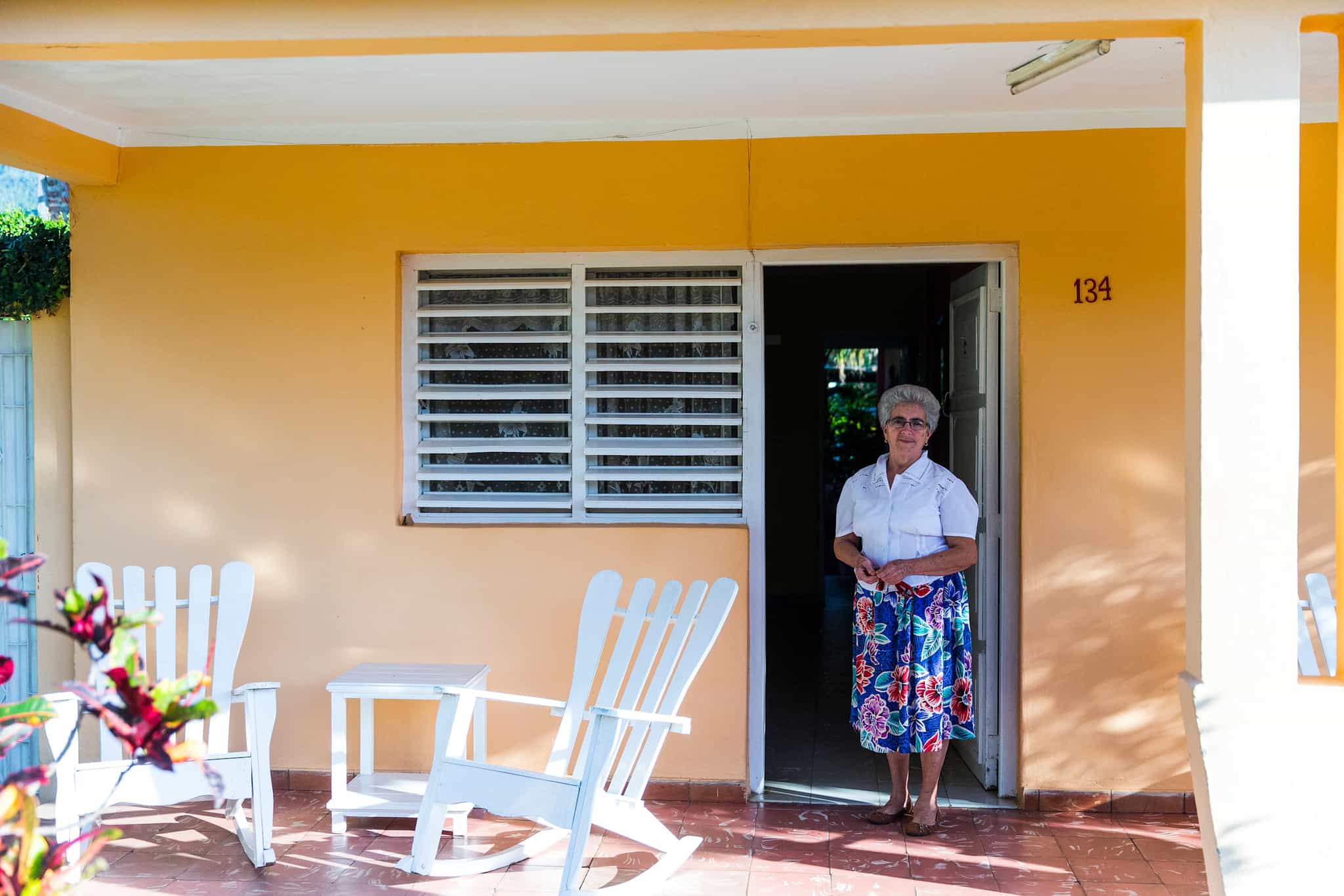
Casas particulares
You'll spend six nights of the trip staying in casas particulares – the quintessential way to see the real Cuba, while also getting a good night's sleep after a long day of cycling. See the FAQ section for more insight into staying in a casa particular. The casas are dotted throughout the itinerary, first in Havana's Old Town, then in the former spa town of San Diego de los Baños, the fishing village of Puerto Esperanza, Cayo Jutias with its white sand beach, and finally in Viñales town. In the casas you'll stay in same-sex, twin-share rooms with a shared bathroom. Cuban homes have simple facilities, a warm welcome and clean rooms. There will be air conditioning and you’ll be spoilt at breakfast in the mornings.
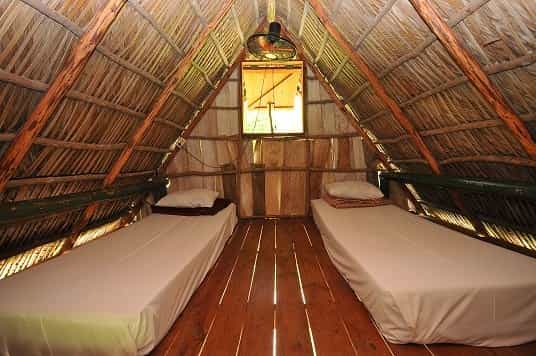
Las Terrazas
In the Sierra del Rosario Nature and Biosphere Reserve you'll stay at Complejo Las Terrazas, located on the banks of the Río San Juan. You'll be bunking down in a series of stilted huts, each one named after a Cuban bird species. The huts are twin-share and kitted out with mattresses, pillows, blankets and a fan. At night you can hear the sound of the river and the trill of nocturnal species in the Cuban countryside. There are shared toilet and shower facilities, though you are also welcome to take a refreshing dip and bathe in the river.
Upgrades
For solo travellers looking for their own space, an optional private room can be booked for an extra charge. See Optional Extras for the price. Please request this at the time of booking (subject to availability). Note this does not cover the stay at Mil Cumbres - there are no single rooms available there.
This trip has been rated as Moderate
You'll need some good fitness levels to cover the distances and to stay comfortable and happy during six consecutive days of cycling. The riding itself is of easy to moderate difficulty. There are no lung-busting climbs and definitely no technical descents to navigate, so realistically anyone who can ride a bike relatively well can join this trip. Some experience of cycling on roads is required; you'll be mainly riding on paved roads, but with variable terrain and plenty of potholes to keep an eye out for!
For more guidance, check out our article on how to choose the right level of cycling trip for you.
Style of Riding: Backroads This trip is backroad cycling, following quiet roads and cycle paths. The roads are mostly smooth but may have occasional bumps, such as potholes, cracks, or rough patches – you'll be riding on a hybrid bike.
Road conditions in western Cuba have deteriorated in recent years, as a result of several hurricanes passing over the region. Some sections of the route involve some very rough road surfaces where your guide will advise riding slowly and with caution.
What will I need to carry?
All your accommodation is pre-booked, and your luggage is transferred from one point to the next. As everything will be transported by the support vehicle (which there will be access to throughout the day) you can cycle completely unburdened, if you wish to. We do suggest bringing a small bumbag for carrying essential items like money, phone, sun cream and a snack. The van also carries tools and spare bike bits if needed.
Cuba is always warm, but certain months are better to visit than others. High season is November to mid-April, with pleasant temperatures in the mid-high twenties Celsius, and plenty of clear skies. September and October bring a higher risk of hurricanes in the Caribbean, so we don't offer trips during those months. Temperatures are higher in the low season, particularly July and August with highs of 32°C/90°F in Western Cuba. April-June is the shoulder season and can be an excellent time to travel, as the weather is pleasant and there are generally fewer visitors. The month of May can be wet, though it’s considered good luck to get wet in the first May showers!




Cycle Cuba a must do trip
Having never done a organised trip before to say I was please try surprised to put it mildly, from the day one communication with MBA team all the way through to the trip was faultless, extremely helpful and very professional. Didn’t have a clue what to expect from Cuba and it delivered, what an incredible country from the countryside to the wonderful happy Cubans, so much adventure, sights, eye opening beauty to rundown buildings, houses and farming that goes back 40 years at least but all part of the adventure and experience, our guide Rei was a legend, great guy, super fun and super knowledgable. I’ll stop there as you must go and experience it for yourselves, do it don’t think about it.
Cycle the backroads of Cuba
Cuba is a poor country. The embargos placed upon it have a pronounced impact on everyday life. Travellers should understand that outside the main cities there are frequent electricity cuts and back-up generators are not put into action till the evening because of the scarcity of fuel. Sometimes hotels & guesthouses have no water. Wi-Fi is poor and there is censorship of apps and websites - a VPN is essential for normal web-browsing especially performing banking transactions. Local SIMs / eSIMs are not that easy to obtain.
As for the cycling, it's very hot and the roads are poor. There are almost no places to stop en-route to get decent snacks, no supermarkets to buy snacks & virtually nowhere to buy fruit. All of the above challenges are simply a function of the country and in no way attributable to MBA. The trip on a whole is excellent and a great way to see a country that functions in a very different way to our lives back home.
Real Taste of Cuba
Just returned to the UK after a great trip to Cuba with MBA. Whilst the local operator and guide were very good ( thanks Jackson and Carlos) it was the other guests who made real difference - and that of course is never guaranteed ! The route to the west of Havana took us through a variety of terrain including rural settlements, mountains and beaches and the local homestays gave us a real feel of life in Cuba. This was complete with power cuts due to recent hurricane damage and acute supply shortages. Local people always friendly and upbeat despite obvious economic challenges. Accommodation was basic but was always clean and comfortable ( even if hot water and power were not always available due to local supply issues). The food variety and flavour was better than expected with generous portions using local fresh produce (as available in season) and the lobster at Teresa's place in Puerto Esperanza was worth the trip in itself! Whilst the route was essentially road/ gravel it should not be underestimated and is challenging due to a combination of hot climate and lack of road maintenance. There are a few stiff climbs and some sketchy descents and some excellent views. The bikes provided functioned well but are more correctly described as "hybrid" than mountain bikes, with basic 60mm coil forks, cable discs and narrow gravel tyres. The 3x8 transmission makes some of the climbs hard work. Just the right mix of cycling, sight seeing, local history and culture. Be aware Cuba is an economically poor country and supply of everything is variable, so if you need something specific then take it with you. If you have space in your luggage be sure to pack a few gifts for your hosts as they often find it hard to get basic consumer and manufactured items form stationary and toiletries to clothes and domestic items. Overall this was exactly what I expected and just what I wanted. .







Disconnected from stress - Connected to Cuba
Wow, what an amazing trip! I went on the trip with may husband and 4 other friends with 4 additional travellers made a nice group of 10. The tour was excellent, the support from the driver "Coco" was fantastic, he kept the bikes and equipment in tip top condition and was always there when we needed a water top up after a long drive and his laugh was infectious.
When read the trip notes I was surprised by the elevation gained and there were quite a few challenging days, but our guide "Arley" gave us plenty of time to complete the journey with lots of rest and information along the way. I wish I had trained a bit more before the trip, but it did not spoil it in anyway and by day 3 you are fully into the swing of things. The scenery was amazing, the heat was intense at times but the breeze rewarding. I had lots of memorable moments, in particular the greetings from Cubans as we passed their houses, shouts of Hola and frantic waves from the kids made for a truly heartwarming moment.
Our host houses were so friendly and welcoming with delicious food they truly reflected the local cuisine you really were eating local produce. The families often gave up a room in the house for us, every room was well appointed and comfortable. They could not have been more welcoming.
When our guide took us to local restaurants the food was equally amazing and the selection was great, super tasty and always enough. I really enjoyed that we were eating in out of the way places that the team have selected, every visit was met with pride.
Our guide was knowledgeable, gentle and kind. He made sure we were always ok and ready for the next leg, keeping us watered along the way, the walking tour around Havana was excellent and a nice end to the trip, although i was itching to get back on a bike ;-) Our group was mixed abilities and i would recommend this to any cyclist, but do train a tiny bit to reduce the amount of swearing on the big hills ;-) Love you Cuba xx





A amazing trip from start to finish!
Staying at the friendly 'Casa Particulars' and cycling through the beautiful countryside made me feel like I got to know the real Cuba. The hosts are so warm and friendly and provide lovely cuban food. The cycling can be a little tricky at times as a lot of concentration is needed to navigate a path over the crumbling roads (sometimes more 'pothole' than road!) but actually this added to challenge and as I'm not a serious cyclist I felt I had really achieved something at the end. We were well looked after by our guide Arley, who provided all the information to help us understand the Cuban culture, history and its people. A real star was 'Coco' the bus driver/bike mechanic/ water giver. He was always behind us (with a very spacious bus), ready to help and make repairs in flash and get us up and cycling again, which was fortunate as we had a fair few flat tyres to contend with! He was also the water giver which was essential in the extreme heat we often were cycling in. Having Coco around really helped us to feel safe and secure. The food, the warm welcome everywhere, the positivity of the Cubans and the wonderful countryside made this an unforgettable experience.




Fantastic trip
We had an amazing trip. Arley our guide and Coco our driver worked tirelessly and were brilliant ambassadors for Cuba. We were mostly in areas that don’t see a lot of western tourists so you really feel that you’re experiencing the real Cuba. The bikes were great and cycling conditions better than expected. The accommodation is basic but everywhere was very clean and comfortable. Our hosts were all very friendly but basic Spanish would make your engagement more fulfilling. The food throughout the trip was fantastic with lots of fresh fish/lobster as well as delicious salads which we weren’t expecting.
If you like cycling, I
If you like cycling, I would really recommend this trip. Cuba was a fantastic country, the people were great, and the scenery is really visually stunning in some parts. Despite what people say, I thought the food was excellent, and I was even limited to vegetarian options - but they were delicious! There were no problems with the bikes - but you will want to be good at tackling hills if you do this trip! Our guide was great fun.
Excellent trip, great guide and driver. Food surpassed expectations and the safety and mechanic support were great. The Casa Permanentes were unique and very clean and the hosts were gracious. I highly recommned this trip. Bring extras to share with the locals - soap, shampoo, clothes, etc.
Honestly, trip of a lifetime! If you are reading this, and thinking about it: do it! Riding through incredible nature every day, and then meeting local families in casas in the evenings, trying Cuban delicacies and even salsa is an experience I'll always cherish.
Our guide Arley and driver Ariel were amazing, so knowledgeable, we had all the support we needed AND all the teamwork and fun too.
Wow! What a wonderful experience of Cuba. The cycling was great and the perfect variation of off road and hills. As always with MBA, it was the sights and activities built in that made it so much more than a cycling trip. It was the best ever Geography, History, PE lesson! Food was plentiful and the hosts were so welcoming and generous. Massive shout out to our wonderful tour leader, Arley! He was brilliant: fun, encouraging, knowledgeable - and we left as friends! Also to Junior, our driver extraordinaire. Big thank you to both. We're already looking forward to our next MBA (our 4th!). Thank you, Cuba!
Itinerary Activities
- Guided ride to the Sierra de Rosario and the San Juan river
- Zip-line in Las Terrazas (optional)
- Guided ride to San Diego de los Baños
- Guided ride to the fishing village of Puerto Esperanza
- Meet with the a community cultural project for a session on traditional Creole music
- Guided ride along the coast to Cayo Jutias
- Swim or snorkel in the Caribbean Sea
- Guided ride exploring Viñales Valley
- Visit a tobacco farm
- Visit the underground river at Cueva del Indio
- Guided ride with views of the Viñales mountains
- Visit the Los Portales cave
Guides
- Expert, local, English-speaking cycle guide
Accommodation
- 6 nights in casas particulares
- 1 night in a riverside stilted hut
Meals
All your meals are provided for the duration of the trip. This includes:
- 7 traditional Cuban breakfasts
- 6 sit-down picnic style lunches
- 7 tasty flavourful dinners
- Snacks while cycling
Transfers
- Arrival transfer from Jose Marti Airport at any time on Day 1
- Departure transfer to Jose Marti Airport at any time on Day 8
- All transfers during the trip
Equipment
- Trek 8.3 DS 2015 front suspension bike
Support Vehicle
- To transfer your luggage, and for you to hop in to if your legs need a rest
Our trips are hassle-free by design. We include all the activities and equipment, as well as many of the meals, so you can simply rock up with your rucksack and share the adventure with your new pals.
Travel to and from the trip
Our trips do not include flights, trains or other travel to the start point and back from the end point.
Tips
Tips are not included in the trip cost. These are entirely at your discretion but there is an expectation to tip for good service. Your guide will help with advice, however, we suggest the below as a guideline:
- £5/€6/$6.50 per person, per day
Please note that the Cuban Peso is quite unstable as a currency, so your guides would hugely appreciate any tips in a hard currency, particularly Euros which are widely accepted in Cuba.
Of course, you are free to tip more or less, and the amount should be reflective of your perception of service and quality.
Visas
Visa requirements often change, and you are responsible for obtaining any required visas for this trip. Please see the FAQ below, and check with your nearest embassy or consulate for up-to-date advice.
Personal Expenses
You know your own spending habits best, so please budget an appropriate amount for things like optional meals and drinks, shopping, optional activities, and laundry.
Travel insurance
Travel insurance is compulsory for all of our adventures and you are required to provide your policy information before departing. Your insurance should include adequate protection for overseas medical treatment, evacuation/repatriation, your baggage and equipment and the specific activities involved on your adventure. We also strongly recommend it includes cancellation and curtailment insurance, should you be unable to join your trip for specific reasons such as illness. Our recommended travel insurance provider is Campbell Irvine, as their insurance offers all of the above.
What's included?
- Trek 8.3 DS hardtail mountain bike with front suspension (Size options: S, M, L, XL, XXL)
What do I need to bring?
CYCLING
- Helmet (required)
- Cycling shoes (bring your own pedals if using cleats)
- Saddle, if you would rather use your own
- Gel saddle cover (optional)
- Bumbag or small handlebar bag for riding (optional)
- Reusable water bottles. It is recommended that you bring cycling water bottles that fit into standard bottle cages on bikes (500ml, 600ml or 750ml).
BAGS
- Duffel bag, rucksack or soft suitcase (max. 80L)
- Small daypack, bumbag or frame/handlebar bag to carry basic essentials while riding
CLOTHES
- Padded cycling shorts
- Sports top or cycling jersey
- Fleece jacket or similar for the evenings
- Trousers/leggings for the evenings
- Waterproof jacket
- Cycling gloves
- Buff or neck scarf
- Lightweight trousers/shorts/skirts
- T-shirts
- Underwear and socks
- Swimwear
- Sunglasses
- Sunhat
- Sleepwear
- Sandals/trainers
OTHER
- Universal travel plug adapter
- Power bank or solar charger
- Passports (and visas)
- Travel insurance documents
- Ear plugs
- Insect repellent
- Suncream
- Personal first-aid kit (inc. blister treatment)
- Personal items (biodegradable toiletries, sanitary wear etc)
- Toilet kit (toilet paper, biodegradable bags to carry paper out to dispose of)
- Quick-dry towel
- Alcohol hand-gel
- Headtorch or small torch
- Biodegradable wet-wipes
- Energy bars and snacks
- Water purification tablets/treatment system
Cuba visa (can be sold to British & European passport holders resident in the UK)
Payable Before Departure
Cuba visa (can be sold to British & European passport holders resident in the UK)
… Per person
Single room in Old Town casa particular
Payable Before Departure
Single room in Old Town casa particular
… Per night
Twin/double room in Old Town casa particular
Payable Before Departure
Twin/double room in Old Town casa particular
… Per night
Optional private room upgrade
Payable Before Departure
Optional private room upgrade
…
Taxi between Havana airport and accommodation - each way (3-5 people)
Payable Before Departure
Taxi between Havana airport and accommodation - each way (3-5 people)
…
Taxi between Havana airport and accommodation - each way (up to 2 people)
Payable Before Departure
Taxi between Havana airport and accommodation - each way (up to 2 people)
…
We partner with the World Land Trust to ensure this trip achieves Net-Zero emissions. We also support their Buy an Acre programme, helping local communities to buy and protect natural habitats in perpetuity.
What's the number?
It works out on average at 128kg of CO2 emissions per person, including all local transport, accommodation, food, activities, guides, staff and office operations.
The only thing it doesn’t include right now is flights and travel to the destination. We do make an overall estimate across all our customers separately, but as we don’t book flights, have customers from all corners of the world, and no way of reliably knowing their travel plans, we simply can’t include an individual number in the figure on display here. We’ve got a goal to fix that, so that when you book, there is a way to measure and mitigate the carbon emitted by your flight too.
But what does the number mean?
Yep, hard to picture eh? To give you an idea:
- Driving 1000 miles/1609km would be approximately 281kg of CO2 in an average car (or 140.5kg per person, if there were two of you in it).
- A return economy class flight between London and New York would be approximately 1619kg (1.66 tonnes) per person.
- 10 trees in a temperate forest are estimated to remove approximately 250kg of CO2 from the air in a period of 5-10 years.
What are we doing about it?
Our trips are relatively low-carbon by design, and we're working with all our hosts to develop long term carbon reduction plans. We partner with the World Land Trust to ensure this trip achieves Net-Zero emissions. We also support their Buy an Acre programme, helping local communities to buy and protect natural habitats in perpetuity, ensuring the protection of the reserve and its wildlife.
Want to know more?
Amazingly, no international travel company has ever publicly published their carbon measurements before, as far as we know. We believe that must change, quickly. So we’re openly sharing the method we used in the hope that other companies will be able to more easily follow suit and build on what we've done so far. You'll find it all here.
It's no secret that we love cycling and many of us at HQ think it's the best way to see a country; however, we realise that organising your own trip can be a total faff. On our cycling trips, we've found a local guide who has put together a perfect route and will navigate for you all the way. We send a van that transports your overnight luggage, as well as providing high-quality bikes and delicious snacks to keep you going. Faff eliminated! All you have to do is turn up, pedal and take in the landscape with your fellow tourers. You don't need to be a lycra-clad 'roadie' although they're welcome too!
Have a read of our article on cycling difficulty levels for further information on selecting the right level of bike adventure for you.
You will be using Specialized Rockhopper hardtail mountain bikes with front suspension and hybrid tyres. These are light aluminium mountain bikes, perfect for riding on roads and rough tracks. The bikes are equipped with a water bottle cage and standard flat pedals. If you would like to bring your own SPD pedals and saddle, these can be fitted for you.
Bikes are available in the following sizes:
- Small (for people 155cm to 165cm tall)
- Medium (for people 165cm to 175cm tall)
- Large (for people 175cm to 183cm tall)
- Extra Large (for people 183cm to 193cm tall)
- Extra Extra Large (for people 193cm to 203cm tall)
If you are outside of these ranges, our local host suggests you bring your own bike and the cost of bike hire can be deducted from your trip after booking. Please consider that your own bike may require special parts for maintenance which may not be locally available, nor possible for the support vehicle mechanics to repair, so the use of the bikes provided by your host is recommended.
On some days, you'll cycle point to point; on other days, there will be a transfer to get you between the cycling routes – this is to keep you away from busy roads and on to the best cycle routes. Driving durations are stated in the itinerary above. The backroads take a bit of piecing together to ensure the riding will be fun and stress-free, and the bus will provide some time to kick back and take it all in.
Casas particulares are Cuba’s answer to the B&B – a Cuban home that rents out at least one room to guests. They became legal to operate in 1997 and have since become the most popular type of accommodation on the island. You'll experience a real Cuban home as the family usually lives in the property they rent out, giving you a unique insight into the way Cubans live. Staying in a casa particular not only it brings you closer to the real Cuba, it’s also a great way to contribute directly to the local economy. The money you spend in a casa particular stays with the family and gets reinvested in their community, making it the simplest way to practice sustainable tourism in Cuba. Your host family will provide breakfast at each of the casas particulares that you stay at on this trip.
Your host provides three litres of mineral water per person, per day. If you require any more than this, you'll need to filter your own water since the tap water in Cuba is not safe to drink. The best option here is to bring a water bottle with a built in water filter, although water treatment tablets are also fine. Have a read of our article on the best water filters for adventurers.
In 2021, Cuba got rid of its dual currency system, leaving the CUP (Cuban Peso) as the sole domestic currency. Cuban salaries are paid in CUP, and locals can pay for basic utilities and goods with this currency. What previously was the CUC (Cuban Convertible Peso) has now been more or less replaced by the digital MLC (Moneda Libremente Convertible), which basically requires Cubans to have access to foreign currencies from outside of Cuba to purchase any imported goods, toiletries, medication, etc.
What does this mean for your trip to Cuba? Long story short, we suggest you bring cash in either USD or Euros (small note denominations) and exchange only a small amount into the local currency (CUP, Cuban Pesos). US dollars currently represent the best value.
GBP and CAD may be accepted as cash payments in some private sector restaurants and bars, however USD and Euros have much more of a reliable and widespread appeal, especially Dollars.
If you want to use your bank card, it is very important to check prior to travel that the bank is not US-owned, as if so you will not be able to use it in Cuba. More ATMs are appearing in Cuba but, in reality, they are very unreliable and often empty. Bank cards can be used in government-owned shops, duty-free shops, as well as hotels, but are rarely accepted in restaurants or bars, so make sure that you plan on bringing enough cash.
Nationals of most countries, including the UK, all EU countries, Australia, Canada and USA require a visa to enter Cuba. The required tourist visa allows the holder to stay in Cuba for 90 days (within 180 days of issue) and is valid for a single entry. You must provide proof of a confirmed return flight and booked accommodation. This tourist visa can be renewed for a further 90 days in Cuba if needed. Note that in 2024, the Cuban government introduced a new 'E-Visa' and announced that the paper 'Tourist Card Visas' would be phased out, remaining valid only up until 31st December 2024.
As long as you are a UK or European Passport holder resident in the UK, you can buy a visa through the local host that we partner with for this trip. Please see Optional Extras to add this to your booking – the cost is £26. Please request this in good time prior to travelling, as the host cannot guarantee the administration of last-minute visa requests.
Alternatively, you can obtain a visa from the Cuban Consulate in person in London, paying in cash. For reliability of service, we strongly recommend purchasing via the host and allowing sufficient time pre-travel.
Note that the visas sold by the host are not applicable for US citizens, nor or anyone travelling from/via/to the United States. In these cases a different type of visa must be purchased from permitted US companies.
You can connect to the internet in most of the larger cities and hotels, but expect the connection to be slower and sometimes patchier than at home (best not plan to watch videos or download large files while you are there). We recommend turning off your roaming data when you land, as you can be hit with heavy charges (check with your provider in case). You will be able to access the internet at your hotel either free of charge, or by purchasing a NAUTA WiFi card. You can also buy a local tourist SIM card (CubacelTur SIM card) at the airport or at offices in the main cities. Unless you have a VPN installed, some US-owned websites will be blocked for you. Your host will be able to help out with more information.
Travel from the USA to Cuba for tourism purposes is currently prohibited by the US Government. This is regardless of your nationality, and applies to all flights scheduled between the two countries. To avoid potential problems with US immigration it is strongly advised not to travel to Cuba via the US. Read the OFAC Regulations on travel to Cuba for more information.
US citizens are very welcome as visitors to Cuba, and commonly fly to Havana on separate flight bookings via regional airports situated in other neighbouring countries.
The US Government classified Cuba as ‘state sponsors of terrorism’ and as a result, anyone travelling to the country after 12th January 2021 is no longer eligible to apply for the US visa-waiver (ESTA) and, as things currently stand, will instead need to apply for a visa through a US Embassy in order to visit the USA in the future. You can request Cuban Immigration not to stamp your passport.
Yes, you can leave any excess luggage at your host's base in Havana.
This trip operates in areas where daytime temperatures can reach extreme highs, where limited shade and high humidity can also be a factor. These conditions can affect physical performance and increase the risk of dehydration or heat-related illness. Your guide will adjust the pace and monitor the group closely, but hydration, proper clothing, and sun protection are essential.
Before travelling, consider your ability to be active in high temperatures and consult a medical professional if you have concerns – especially if you have any cardiovascular or heat-sensitive conditions. Arriving a day or two prior to the trip may help you adjust gradually to the heat.
Sure can! Over 70% of our travellers travel solo, it’s a great way to meet like-minded people.
Our team of Adventure Hunters co-create exclusive adventures which are run by highly vetted, specialist hosts. The trip is run by our trusted host partner in the destination. We only work with independent, local, in-destination experts who know the very best places to explore and how to stay safe. Read more information about the local teams we partner with. You’ll be introduced to the host straight after making a booking via the Much Better Adventures platform.
Much Better Adventures refer to the UK Government’s official travel advice when designing trips and monitoring trip operations. We recommend that all customers are familiar with the practical information provided on the Government’s FCDO website, where current travel advice can be found by searching for the applicable destination(s).
For customers joining this trip from other international destinations – please also read the official travel advice applicable to your country of residence/origin, as this may differ.
We recommend checking out the country-specific information and also talking to a travel nurse.
We automatically convert prices from the local currency that a host receives to your chosen currency. We update our exchange rates on a daily basis so this does mean that prices displayed on the site are subject to currency fluctuations, which is why you may see them change over time.
If you wish to change the currency you pay in, head to the bottom of the page.
All of our group adventures are specially designed for adults to enjoy as we want these adventures to bring together outdoorsy people who are truly like-minded. You must be over 18 to join one of our trips.
You're always in good company on one of our adventures.
Our trips are typically made up of a mixture of solo travellers and small groups of 2 or 3 friends, with most in their 30s-50s.
Our sociable adventures are solo-friendly by design and naturally attract outdoorsy people with a shared mindset; a love for adventure, a desire to push themselves and meet awesome, like-minded people along the way.
It’s this camaraderie that has so often turned a great adventure into a life-changing one.
Don't just take our word for it:
- 95% of people rate the group dynamics on our trips 5/5
- 90% of people recommend joining a trip to make new friends
- 75% of people have met people on our trips that they would now consider friends
See here for more info about the Much Better Adventures tribe.
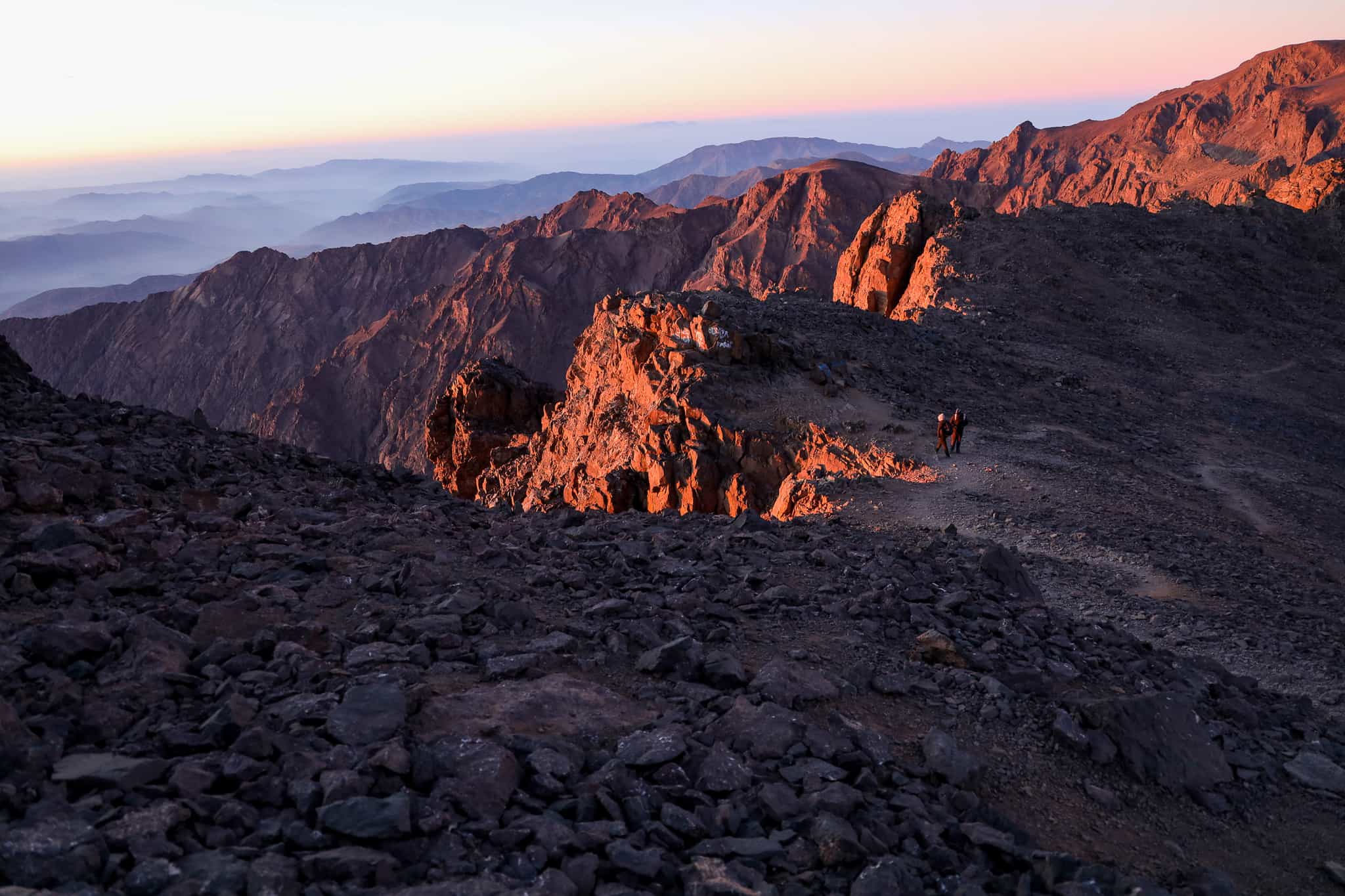
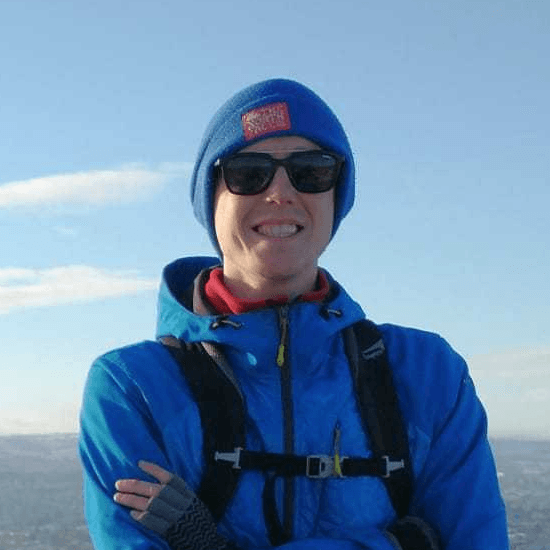
Need help finding flights?
From logistics and how to get there, to fitness, group dynamic and trip difficulty, Rory and his team of friendly experts are on hand to help.
We've got your back
Guaranteed to run
All Much Better Adventures trips are now guaranteed to run. Once you’ve booked your spot you can immediately make your travel arrangements, no uncertainty, no hanging about (excludes 'request to book' departures). Full details
Flexible payments
Secure your spot with the minimum deposit and pay off the remaining balance in as many instalments as you like, with no interest or fees. Full details
Happiness Guarantee
We’re so confident you’ll have an amazing time we’ll put our money on it. Full details
Full financial protection
To give you complete peace of mind Much Better Adventures is backed by ABTOT, ABTA and ATOL memberships. Full details
Tried & Trusted
Much Better Adventures is rated ‘Excellent’ on Trustpilot with over 1000 verified trip reviews averaging 4.8/5.
Connect before you go
You'll be invited to join a WhatsApp group to get to know each other before your big adventure together. Full details
DEPARTURE DATES
Saturday 15th November 2025
to Saturday 22nd November 2025
